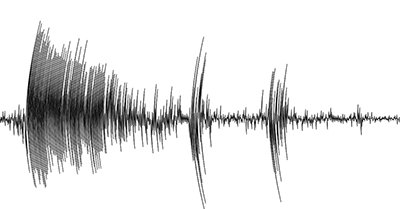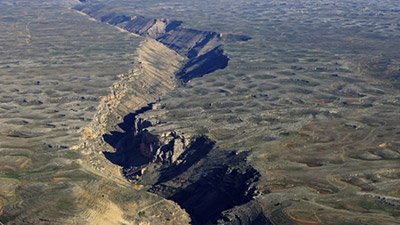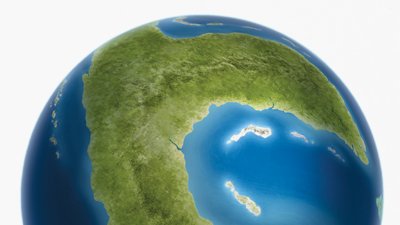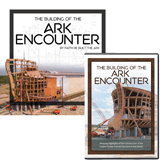Plate Tectonics
Plate tectonics refers to the slow movement of the earth’s crustal plates. These plates were formed when earth’s crust broke apart at the beginning of the global Flood. Due to unique geological conditions, these plates moved rapidly, reshaping earth’s surface. This is known as Catastrophic Plate Tectonics (CPT).
The Basics of Plate Tectonics
The word “tectonics” has to do with earth movements; so the study of the movements and interactions among these plates is called “plate tectonics.” Plate tectonics is an interpretation or model of what geologists envisage happened to these plates through earth’s history
Catastrophic Breakup
Plate tectonics is not directly mentioned in the Bible, but Genesis 1:9–10 suggests that all of the land was once connected, whereas the continents are now separated. The catastrophic plate tectonics model and continental sprint during the Flood can explain this.
Plate Tectonics and the Flood
We have a reasonable picture of what happened at the catastrophic initiation of the Flood. Huge plumes of molten rock blasted the underside of the earth’s thin oceanic crust like massive blow-torches. Eventually the oceanic crust was ripped apart, and mainly steam burst forth. The spreading rift eventually reached the supercontinent which collapsed.
New Rift in Ethiopia
In the middle of the Ethiopian desert, a 35-mile-long gash cuts through the earth, the product of tectonic activity in 2005. The speed with which the Ethiopian rift appeared is a suggestion of just how rapidly tectonic events may occur on earth now.
News About Plate Tectonics
-
Feb. 1, 2021 from Ken Ham Blog
The science of plate tectonics in geology, started by a creationist in the 19th century, continues to provide testable predictions within a biblical worldview.
Articles About Plate Tectonics
-
Oct. 1, 2022 from Answers Magazine
In 1906, a massive earthquake shook San Francisco. Some people fear the next big one is due. What do seismologists predict, and what does Scripture say?
-
Nov. 25, 2018 from Answers Magazine
Every student in US public schools will likely come across illustrations claiming the earth’s tectonic plates have been moving slowly for millions of years.
-
Aug. 18, 2018 from Answers Magazine
When geologists assume the earth changes slowly, they overlook astonishing evidence of Noah’s global Flood.
-
April 2, 2017 from Answers Magazine
The idea that continents move sounds crazy . . . until you look at the facts.
-
Dec. 2, 2016 from Answers in Depth
Why would the Southeastern USA experience such a devastating earthquake, a region that sits snugly in the middle of a tectonic plate?
-
Nov. 10, 2016 from Answers in Depth
Evidently, just prior to both periods, massive tectonic collisions took place near the earth's equator—a tropical zone where rocks undergo heavy weathering.
-
Semi-Technical In-Depth ArticleHow Did Plate Tectonics Get Started on Earth?March 2, 2016 from Answers in Depth
Secular geologists are puzzled by how plate tectonics got started if early earth’s surface was covered by a layer of crust that kept the surface motionless.
-
Oct. 20, 2015 from Answers Magazine
The biblical worldview changes how you see everything, even a “paradise” like Hawaii.
-
May 3, 2015 from Answers Magazine
The world that we see today is not the one that existed in Noah’s day.
-
Book ChapterCan Catastrophic Plate Tectonics Explain Flood Geology?March 3, 2014 from The New Answers Book 1
How could a massive, global flood be triggered? Do plate tectonics provide a valid mechanism? Geologist Andrew Snelling answers.
-
Smithsonian’s Account of Tectonic History Short-SightedMay 26, 2012 from News to Know
Smithsonian’s account of tectonic history is significantly short-sighted.
-
Diamond Data Shows Begininning of Colliding ContinentsJuly 30, 2011 from News to Know
Diamond data testifies to tectonic history—or does it?
-
Book ChapterPlate TectonicsFeb. 10, 2011 from Evolution Exposed: Earth Science
The motion of the earth’s crust is accepted by uniformitarian and creationist scientists alike. The difference lies in the time frame over which the movement has happened.
-
Technical In-Depth ArticleCatastrophic Plate Tectonics: A Global Flood Model of Earth HistoryOct. 27, 2010 from Answers in Depth
Because of the enormous explanatory and predictive success of the plate tectonics model, we feel that at least some portion of plate tectonics theory should be incorporated into the creation model.
PDF Download -
Magazine Department ArticleA New Ocean in the Making?April 1, 2010 from Answers Magazine
Is Ethiopia splitting in two? A huge cut in the ground appeared suddenly in 2005 due to volcanic activity.
-
Magazine Department ArticleGetting Closer to Down UnderJan. 1, 2010 from Answers Magazine
An earthquake moved New Zealand closer to Australia.
-
New Ocean in Africa?Nov. 14, 2009 from News to Know
Thousands of years ago, God parted the Red Sea. Is He parting Ethiopia now?
-
Rocks Tell us About ScientistsJune 13, 2009 from News to Know
Scientists have honed a geological technique to piece together the history of tectonic plates.
-
March 20, 2007 from Answers Magazine
When you look at a globe, have you ever thought that the earth looks cracked? Or, maybe the continents have reminded you of a giant jigsaw puzzle.
-
Technical Research PaperDealing Carefully with the Data, ContinuedApril 1, 2002, pp. 82–85
More information is provided from the ocean floor on the uniformitarian assumptions that undergird his belief in plate tectonics.
-
Technical Research PaperA Constructive Quest for TruthApril 1, 2002, pp. 78–81
When one examines Michael Oard’s own alternative explanations for the tectonic features of the Earth, it should be plain he is not concerned with serious alternatives to the paradigm he is attacking.
-
Technical Research PaperDoes the Catastrophic Plate Tectonics Model Assume Too Much Uniformitarianism?April 1, 2002, pp. 73–77
Baumgardner’s model is elegant, but contains many problems. The most serious seems to be assuming plate tectonics has been proven and too much uniformitarianism.
-
Technical Research PaperDealing Carefully with the DataApril 1, 2002, pp. 68–72
Michael Oard’s first contribution in this forum lays out a valid criticism of uniformitarian plate tectonics—namely the quantity and character of the sediments in the deep ocean trenches.
-
Technical Research PaperCatastrophic Plate Tectonics: the Geophysical Context of the Genesis FloodApril 1, 2002, pp. 58–63
Any serious model for the Genesis Flood must account for the massive tectonic changes evident in the geological record since the point in that record where metazoan fossils first appear.
-
Technical Research PaperForum on Catastrophic Plate TectonicsApril 1, 2002, pp. 57–58
We publish here six articles that address catastrophic plate tectonics as a framework for Biblical Earth history.
-
Semi-Technical Research Paper'Nucha' and Plate TectonicsApril 1, 2001, pp. 58–59
This bias against the plate tectonics paradigm has developed after examining the paradigm for 25 years. I find many serious problems with it that I have recently catalogued.
Recommended Resources

Answers in Genesis is an apologetics ministry, dedicated to helping Christians defend their faith and proclaim the good news of Jesus Christ.
- Customer Service 800.778.3390
- Available Monday–Friday | 9 AM–5 PM ET
- © 2025 Answers in Genesis










